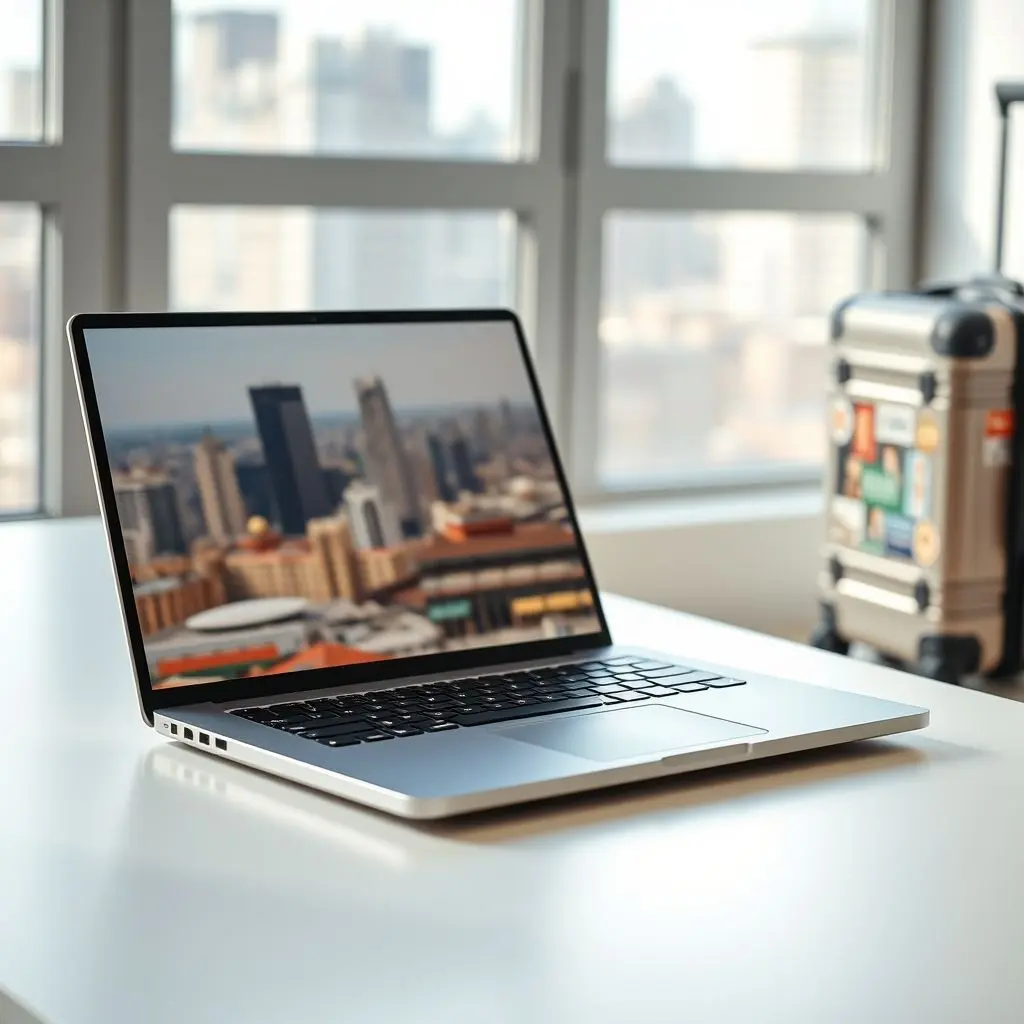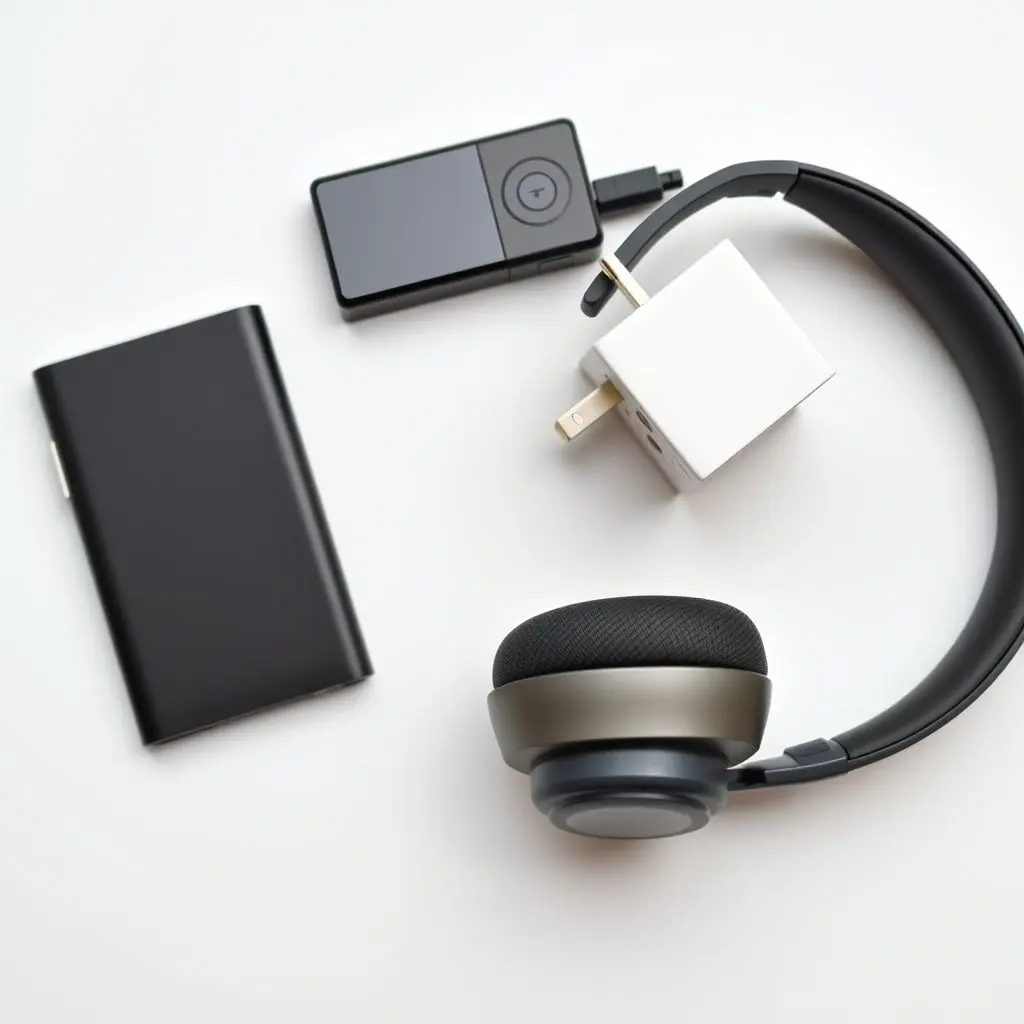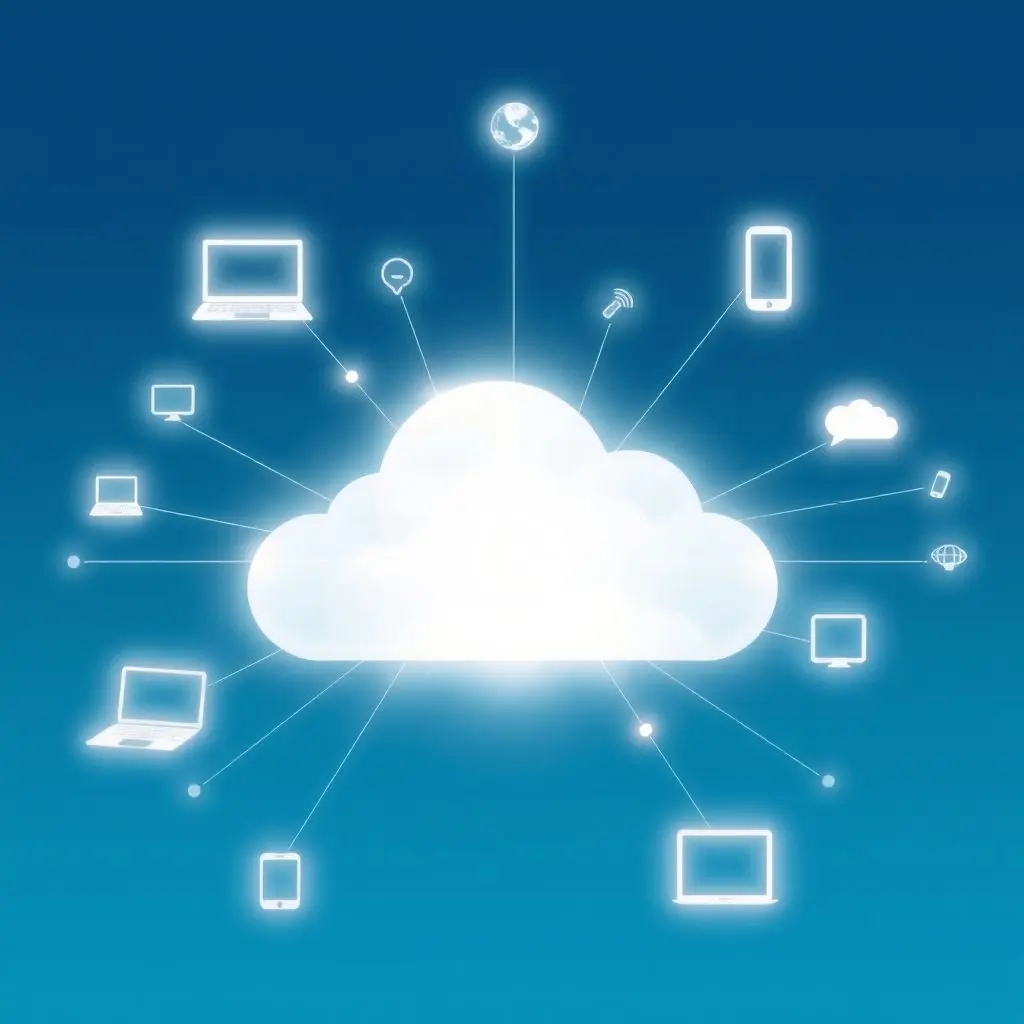The image is vivid: a laptop perched on a sun-drenched beach, waves gently lapping. It’s the quintessential symbol of digital nomad freedom. But strip away the romance, and you find a truth less photogenic but infinitely more practical: this lifestyle isn’t built on good vibes and sandy toes alone. It’s constructed, piece by technological piece, on a foundation of reliable, powerful, and often portable gear.
That idyllic scene? It’s made possible by far more than just a strong Wi-Fi signal from a nearby cafe. It’s about having high-speed internet solutions literally at your fingertips, whether that involves leveraging sophisticated portable hotspots or strategically tapping into robust network infrastructures wherever you land. It’s about carrying computing power that belies its featherlight weight, silencing the world with noise-cancelling headphones, and keeping everything running with power banks that seem to defy physics.
Your office isn’t a fixed address; it’s a constantly evolving panorama outside your window. But the engine room, the collaboration hub, the filing cabinet that holds your life’s work? That’s the cloud. It’s where documents reside, where applications hum, and where seamless teamwork bridges continents. And because your physical location is fluid, the digital boundaries become even more critical. Robust cybersecurity isn’t a luxury; it’s the non-negotiable shield protecting your livelihood.
In short, the digital nomad dream isn’t conjured; it’s enabled. It’s the carefully curated tech stack that turns possibility into reality, transforming any corner of the globe into a functional workspace. If you’ve ever dreamt of trading your cubicle walls for a horizon line, understanding the tech that unlocks this world is your first step.
Want a quick peek into the digital nomad’s tech toolkit? We put together a short video highlighting some key essentials:
Let’s dive deeper into the specific technologies that are the unsung heroes behind this flexible lifestyle.
Table of Contents
The Lifeline: Staying Connected Anywhere, Anytime
Connectivity is arguably the most critical component of a digital nomad’s setup. Without a reliable internet connection, even the most powerful laptop is just an expensive paperweight. While seeking out cafes with Wi-Fi is a common tactic, relying solely on public networks can be unreliable, slow, and pose security risks. This is where dedicated, portable internet solutions come into play.
Portable Hotspots (Mi-Fi Devices): These small, battery-powered gadgets act as a personal Wi-Fi network. They typically use a cellular data connection (like 4G or 5G) via a SIM card. The key is finding devices that support multiple bands and frequencies used globally, or opting for international SIMs or data plans. Look for features like long battery life, the ability to connect multiple devices, and support for the latest cellular standards for speed.
High-Gain Wi-Fi Antennas and Repeaters: Sometimes, the Wi-Fi signal is *there*, but it’s weak or unstable. A portable high-gain antenna can boost your laptop’s ability to pick up distant signals. Repeaters or travel routers can take a weak signal and extend its range, useful in larger apartments or hotels with spotty coverage. Some travel routers also offer basic firewall features or the ability to create a private sub-network for added security over public Wi-Fi.
Local SIM Cards and eSIMs: Buying local SIM cards upon arrival in a new country is often the most cost-effective way to get reliable data on your smartphone, which can then be tethered (used as a hotspot) for laptop use. eSIM technology, built directly into many newer phones and devices, eliminates the need for physical SIM cards and allows for easy switching between data plans from different carriers globally through apps.
Satellite Internet (Emerging Option): While still less common for everyday travel, services like Starlink are becoming a potential game-changer, especially for nomads venturing into truly remote areas where traditional cellular or Wi-Fi infrastructure is non-existent. This technology provides internet access via satellite, offering a level of freedom previously unimaginable, though the equipment is bulkier and service costs are higher.
It’s not just about having internet; it’s about having *reliable, fast, and secure* internet wherever your work takes you. A multi-pronged approach, combining local options with portable solutions, is often the most effective strategy.

The Mobile Office: Computing Power on the Go
Your laptop is your primary workstation, and for a digital nomad, the requirements go beyond just processing power. It needs to be a harmonious blend of performance, portability, durability, and battery life.
Powerful Yet Lightweight Laptops: The days of needing a bulky desktop replacement for demanding tasks are largely over. Modern ultrabooks and thin-and-light laptops pack serious processing power (Intel Core i5/i7 or AMD Ryzen 5/7 and up), ample RAM (16GB is becoming standard for multitasking), and fast SSD storage into packages weighing well under 3-4 pounds (1.5-2 kg). Screen size is a personal choice, but 13-14 inches often strikes the best balance between workspace and portability. Look for robust build quality – aluminum or magnesium alloy chassis can better withstand the bumps of travel than plastic.
Extended Battery Life: Access to power outlets isn’t always guaranteed. A laptop with 8-10+ hours of real-world battery life is crucial for long flights, train journeys, or working from parks and cafes without convenient power. Checking independent reviews for actual battery performance under typical workloads is essential.
Secondary Devices (Tablets/2-in-1s): Many nomads supplement their laptop with a tablet or a 2-in-1 device. These can be great for reading, note-taking, quick emails, or entertainment on the go, often with even longer battery life and lighter weight than a laptop. A tablet can also serve as a secondary display for increased productivity if needed.
Selecting the right primary computing device involves careful consideration of your specific workload (video editing vs. writing vs. coding), budget, and travel style. Prioritizing portability and battery life without sacrificing necessary performance is the key challenge.

Essential Travel Tech and Peripherals
Beyond the core computing and connectivity, several other gadgets significantly enhance the digital nomad experience, improving focus, productivity, and power access.
Noise-Cancelling Headphones: Working in diverse environments means dealing with unpredictable noise – bustling cafes, chattering co-workers in a coworking space, or loud transport. High-quality noise-cancelling headphones are invaluable for creating a bubble of concentration. Look for comfortable designs suitable for long wear, effective active noise cancellation, and decent battery life.
High-Capacity Power Banks: Keeping all your devices charged is a constant battle. A powerful portable power bank (20,000mAh or more) with multiple ports (including USB-C Power Delivery for laptops) can recharge your phone multiple times and give your laptop a significant power boost when outlets are scarce. Remember airline restrictions on lithium-ion battery size for carry-on luggage.
Universal Travel Adapters & Surge Protectors: Different countries use different plug types and voltage standards. A reliable universal travel adapter is a must. Some also include USB ports for charging multiple devices. A small surge protector strip can be a lifesaver in locations with unstable power grids, protecting your valuable electronics from spikes.
Portable Ergonomics: Long hours on a laptop keyboard and trackpad can lead to discomfort. Some nomads carry lightweight, foldable laptop stands to raise the screen to eye level, external portable keyboards, or compact travel mice for improved ergonomics.

The Cloud: Your Borderless Office Backbone
The concept of a fixed office with physical servers and shared drives is incompatible with the nomadic lifestyle. The cloud is the invisible infrastructure that makes global, asynchronous work possible.
Cloud Storage and Sync: Services like Google Drive, Dropbox, OneDrive, or iCloud allow nomads to store all their files securely online. More importantly, they enable seamless synchronization across multiple devices and easy sharing with clients or collaborators, regardless of location.
Collaboration Tools: Project management platforms (Asana, Trello, Notion), communication apps (Slack, Microsoft Teams, WhatsApp), video conferencing software (Zoom, Google Meet, Skype), and shared document editors (Google Workspace, Office 365) are the virtual meeting rooms and whiteboards of the digital nomad world. They enable teams located in different time zones to work together effectively.
Cloud-Based Software (SaaS): Many essential work applications are now Software as a Service (SaaS), meaning they run in a web browser or connect to cloud servers. This eliminates the need to install heavy, licensed software on every device and ensures access to the latest features and data from anywhere with an internet connection.
Relying on the cloud requires a good internet connection, but it provides unparalleled flexibility, scalability, and access that is fundamental to working remotely across borders.

Non-Negotiable: Cybersecurity on the Move
Moving between networks, using public Wi-Fi, and accessing sensitive information remotely significantly increases security risks. Robust cybersecurity practices and tools are not optional; they are essential components of the digital nomad tech stack.
Virtual Private Networks (VPNs): A VPN encrypts your internet connection, creating a secure tunnel between your device and the VPN server. This is critical when using public Wi-Fi, as it protects your data from being intercepted by others on the same network. VPNs also allow you to bypass geo-restrictions and access content or services that might be unavailable in your current location. Choosing a reputable VPN provider with a strict no-logs policy is paramount.
Password Managers: Reusing passwords across different services is incredibly risky. A password manager generates strong, unique passwords for each account and stores them securely behind a single master password. This is vital for protecting everything from your email and banking to project management tools.
Two-Factor Authentication (2FA): Enable 2FA whenever possible on all critical accounts. This adds an extra layer of security by requiring a second form of verification (like a code from an app or sent to your phone) in addition to your password.
Secure Backup Strategy: Devices can be lost, stolen, or damaged. A regular, secure backup strategy is crucial. This involves backing up data to cloud storage, an external hard drive, or a combination of both. Encrypting sensitive backups is also a good practice.
Keeping Software Updated: Regularly updating your operating system, applications, and security software patches vulnerabilities that could be exploited by cybercriminals.
Being a digital nomad means being your own IT security department. Taking proactive steps to protect your data and devices is just as important as having the right hardware.

Frequently Asked Questions About Digital Nomad Tech
Here are some common questions people have about the technology requirements for the digital nomad lifestyle:
Q: How much should I budget for digital nomad tech?
A: This varies greatly depending on your work and existing gear. A high-quality, lightweight laptop can range from $800 to $2000+. Portable hotspots, headphones, power banks, and adapters can add another $200-$500+. Ongoing costs include data plans, cloud storage subscriptions, VPN services, and software licenses. You can start with more budget-friendly options and upgrade over time, but investing in a reliable laptop and connectivity is generally recommended early on.
Q: Is an expensive laptop really necessary?
A: It depends on your work. If you’re a writer or doing light administrative tasks, a mid-range laptop might suffice. However, for demanding tasks like video editing, graphic design, or complex programming, a more powerful machine is essential for efficiency. Regardless of power, prioritize good battery life, portability, and durability, as these factors are universally important for nomads.
Q: Can I rely solely on my smartphone and tethering?
A: For occasional light work, yes. But for sustained productivity, a laptop is usually required due to screen size, ergonomic keyboard, and processing power for desktop-level applications. Tethering can also quickly drain your phone’s battery and incur high data costs depending on your plan and location.
Q: What’s the best way to get internet in different countries?
A: A multi-layered approach is best. Research local SIM card options before arriving for cost-effective data. Consider an eSIM for convenience. Have a portable hotspot as a backup or primary option if local SIMs are difficult or expensive. Leverage reliable cafe or coworking space Wi-Fi when available, but always use a VPN over public networks.
Q: How do I protect my devices while traveling?
A: Physical security is as important as digital. Use sturdy bags and cases. Be mindful of your surroundings, especially in public places. Don’t leave gear unattended. Enable tracking features (like ‘Find My Device’) on your phone and laptop. Back up your data regularly so that if a device is lost or stolen, your work isn’t gone forever.
Unlocking a World of Possibilities
The freedom to work from anywhere isn’t magic; it’s the direct result of incredible technological advancements. From the miniaturization of powerful computers to the ubiquitous reach of cloud services and the ever-improving speed of wireless communication, tech has dismantled the traditional barriers of location.
It’s the portable hotspot connecting you from a remote village, the featherlight laptop running demanding software on a train, the cloud keeping your team in sync across continents, and the VPN shielding your data on a cafe’s Wi-Fi. These aren’t just gadgets; they are the tools that translate the aspiration of a location-independent life into a functioning reality.
If your idea of an upgrade involves a passport stamp rather than just a new monitor, then understanding and leveraging the right technology is your ticket to building that future, byte by byte, connection by connection. Your digital future, built to last, wherever you choose to roam.
If you found this exploration helpful and are keen on decoding more tech that unlocks possibilities, show some love for this article and consider subscribing for more insights faster than a lightning-fast upload!





